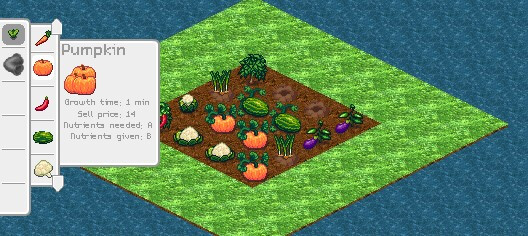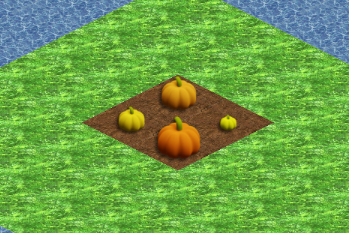Howdy fellow devolders! I have been planning a project for a while. It is a farm sim with much more enphasis on the sim side, so for example the crops and plants you can grow can suffer from pests, seasons like winter, summer, need an irrigation system and alike. As of now the project is a planning thing only, here some screenshots of how it should look like:
everything is on proof of concept phase as of now. The project was meant to be built on Love2D framework. Thing is, now that i think of it, Defold is not only fast and lightweight like love2d, but it is far more robust too. Particle editor, tileset handler, collision detection… The list goes on, thing is this project was planned on love2d, it uses lots of optimizations and quirks that idk how to properly transport to Defold. There are several examples, but the main one is the terrain. On the first screenshot i sent, the player would first be presented with an area they could plant on and they could expand that area as the game progresses. In love2d everything is so bare bones that i had to manually call a draw routine for the terrain, crops, etc. As such it was really easy to have a 2d array representing the map and each entry of the array had information about what tile it is, etc. And i could change that at any moment. But in Defold i have to use either a sprite or a tilemap. How can i have a dynamic terrain that can change, grow/shrink in size and alike? Any help is greatly appreciated!


